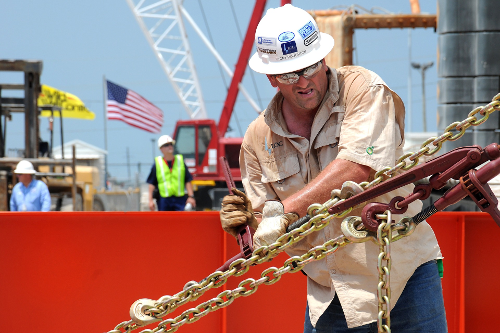7 Fool Proof Ways To Protect Oil And Gas Workers.

By its very nature, the oil and gas Industry can be a dangerous occupation. This applies to both offshore and onshore, and applies equally to upstream (extraction of crude oil and natural gas), midstream (transportation, storage or wholesale marketing) and downstream (refining, processing or purifying) activities.
Although there have been considerable improvements in safety performance over the past few decades, there is still room for improvement, and the industry should, in no way, be complacent. The industry faces a wide range of potential safety risks, including:
- Vehicular accidents.
- Fires and explosions.
- Falls from height.
- Crushes or entrapment from moving or falling objects.
- Slips, trips and falls.
- Burns, scalds and breathing difficulties from exposure to chemicals.
- Confined space injuries including asphyxiation and hypothermia.
- Manual handling.
- Drowning.
It is a legal requirement for all companies to reduce these incidents to a minimum. Companies have a duty of care to staff, contractors, suppliers, clients and visitors. In a bid to improve safety in the industry, we have prepared 8 fool-proof ways to reduce the likelihood of worker accidents.
1. Value opinions at every level.
Hazards can result when individuals lower down the organisational structure feel that their opinions are ignored. Workers are on the frontline of many of the most important processes, and so companies with two-way communication with their workers are often better educated on potential risks.
On the job feedback should be encouraged and considered for inclusion in safe working practices. Valuing the opinions of all workers, whatever their pay grade, will ensure that when problems arise they feel comfortable reporting the issue to their superiors. This input develops a culture of continuous improvement.
2. Allow workers to rest.
A surprising statistic in the oil and gas industry is that road accidents are the leading cause of death. Although this may seem unrelated, this is in fact due to highly-fatigued workers driving long distances though arduous terrain, often in poor weather conditions.
One of the easiest ways to reduce accidents is simply to ensure workers have sufficient time off. In the industry workers can have 14 hours a day shift patterns over weekly or even monthly periods, even in the most hostile weather conditions. The resulting severe fatigue and drowsiness ultimately leads to careless mistakes.
3. Ensure workers are aware of all potential hazards.
Workers cannot be careful of a hazard they are unaware of. During on job training, employees should be informed multiple times of each hazard. Refresher courses for existing workers are also valuable, as they may have forgotten training they received months or even years ago.
The training should encapsulate safe operation of heavy equipment, the importance of good housekeeping, and encourage worker vigilance and responsibility.
4. Regularly perform maintenance checks.
As time takes it’s toll on equipment, seemingly reliable systems can fail when they are most needed. The consequences of an equipment failure can be diverse, and are dependent on the part that failed.
To reduce vital equipment failures, there should be a programme of maintenance checks on equipment, plants, pipelines, and tools. Faulty parts should be replaced or repaired once discovered. Where faulty parts are discovered, improvements to the relevant process should be considered, and even the use of new technology.
5. Mark all dangerous chemicals or hazardous materials.
In the oil and gas industry there is the possibility of contact with hazardous chemicals and materials. These chemicals may be flammable, toxic, corrosive, oxidising, or explosive. These risks should be clearly marked, and employees should be aware of risks from ingesting, inhaling or skin contact.
6. Provide adequate equipment.
To enable your employees to perform their roles safely and effectively, they must have equipment, tools and personal protective equipment that are fit for purpose.
Chemical hazard protective equipment will usually involve gloves, face shields, and protective clothing. Heavy equipment protective equipment will usually constitute hard hats, welding masks, safety boots and manual handling aids.
7. Have an emergency plan.
Despite taking every precaution to reduce the chance of an incident, there is always the possibility of human error or mechanical failure. In this worst-case scenario, an emergency plan has to be implanted immediately
It is essential that this plan is comprehensive, incorporating major accident prevention, fire prevention, response and evacuation plans. Evacuation routes should be clearly marked to provide safe access away from the hazard area.
First aid equipment and treatment should be on hand in the event of injuries to individuals. Chemical decontamination showers should be a short distance from hazardous chemicals, and first aid boxes close to crush and cutting hazards.
Label Source is a global provider of tagging, labelling, pipeline marking and safety sign solutions.